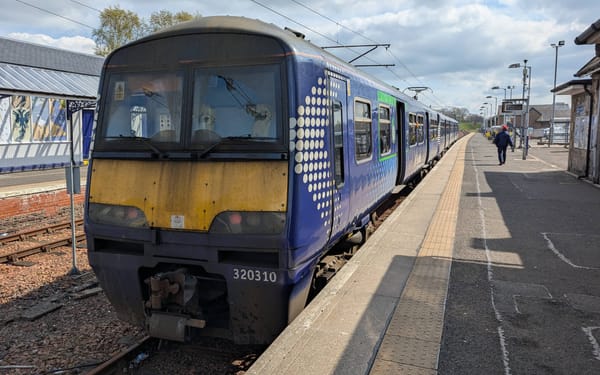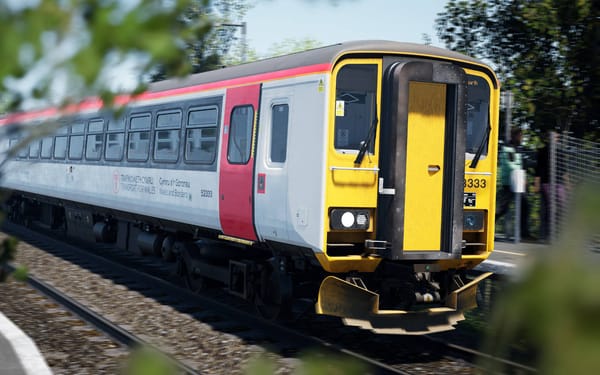What is the Automatic Warning System? (AWS)

If you're interested in the railways across the UK, there's a good chance you'll have heard of the term AWS before. AWS stands for Automatic Warning System, and it is a train safety system used to indicate the status of the next signal using audible and visual cues. It can also be used to alert the driver to imminent level crossings and temporary and emergency speed restrictions on the line.
The Automatic Warning System consists of equipment both on the track and on the train. Let's look at the track first.
AWS Magnets
AWS magnets are typically installed on the track 180 metres before a signal. The idea is to provide the driver ample distance, and therefore time, to react. As such, the magnets may be further away from the signal on high-speed lines, and closer to the signal on platform tracks or other low-speed lines.
First in line is the permanent magnet. When the detector on the underside of a train passes over the permanent magnet, the AWS alarm is triggered.
Immediately after the permanent magnet is an electromagnet; its status is directly tied to the aspect of the next signal. If that signal is clear, the electromagnet is energised. Otherwise, it remains inactive. The implication of this is that AWS cannot distinguish between a double yellow, yellow, or red aspect.
Importantly, the polarity of the electromagnet is opposite to the polarity of the permanent magnet. If the electromagnet is energised, it too is detected by the train, and the AWS alarm triggered milliseconds beforehand is cancelled. If the electromagnet is not energised, that AWS alarm continues to sound.

Other Magnets
Temporary and emergency speed restrictions were mentioned at the start of this article. Because of the way the Automatic Warning System works, engineers only need to install a portable permanent magnet to alert drivers to these changes. The electromagnet is unnecessary, because the alarm should always sound in these circumstances. AWS does not factor in the cause of the alarm, only that there is an alarm to be acknowledged. It is up to the driver to determine the alarm's cause.
Sometimes, a suppressor magnet is installed alongside the permanent magnet and electromagnet. As the name suggests, the suppressor magnet suppresses the permanent magnet, preventing the AWS alarm from being triggered. This might be used on a bi-directional line, where the AWS magnet applies to the signal in the opposite direction.
Finally, there are also depot test magnets. These are installed on the tracks exiting depots. They allow drivers to verify that the system is working before they take their train onto the network. These only use permanent magnets.
Train Equipment
But all these magnets need to be detected by the train for the system to work. As such, the UK's various rolling stock are fitted with AWS receivers at the each end of the train, below the driver's cab. These receivers record the polarities of the magnets, to be able to tell permanent magnets and electromagnets apart.
Inside the cab there is the audible indicator. When passing an energised electromagnet, meaning the next signal is clear, the sound of a bell is played. Otherwise, when a permanent magnet is passed, a (electronic) horn sounds until a button is pressed to acknowledge the alarm.
There is the visual indicator as well, which is commonly known as the AWS 'sunflower' because of its pattern and yellow colour. It illuminates when an alarm is triggered. It remains illuminated even after the alarm is acknowledged to serve as a reminder for the driver. However, it turns off when the driver encounters an energised electromagnet.

What happens if the driver fails to acknowledge an AWS alert? The emergency brakes are applied automatically after 2-3 seconds, bringing the train to a complete stop. AWS cannot be used to detect whether a signal has actually been passed at danger — known otherwise as a SPAD — so it is used in tandem with the Train Protection and Warning System (TPWS), which provides this functionality.
Next time you're on a train, if you sit near the driver's cab, you may well hear the AWS bells and horns sounding as you travel the line.





